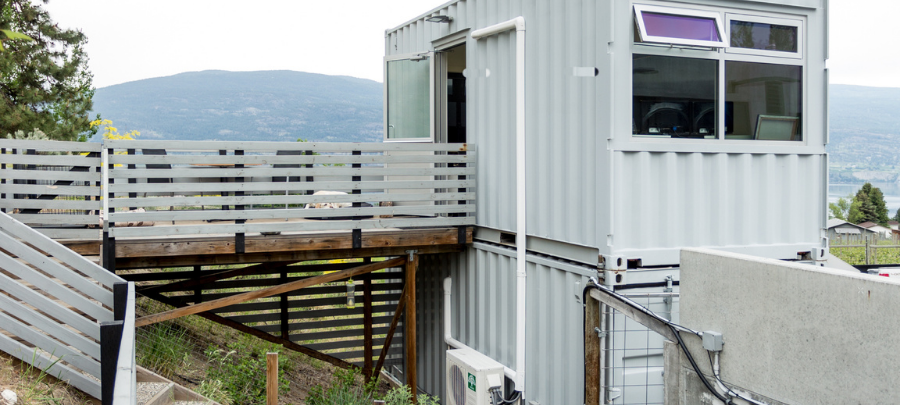
Pack It In And Stack It Up
November 30, 2021
6 Beloved Applications In The World Of Stackable Space
If you’re imagining a stack of shipping containers, you’re probably making a common comparison to LEGO or Tetris. While shipping containers do fit well together, they do not “fit in” to one another the way LEGO pieces are designed to, and they require additional safeguards like twist locks for the corners.
When connected safely and correctly, stacked shipping containers can open up a world of options for businesses, developers, construction sites, and even creatives! Thanks to their customizability, shipping containers can be modified to incorporate add-ons like stairs, landings, personnel doors, windows, and more.
Take a look at six of our favourite stacked shipping container applications:
The Trifecta – Three Rooms In One Stack
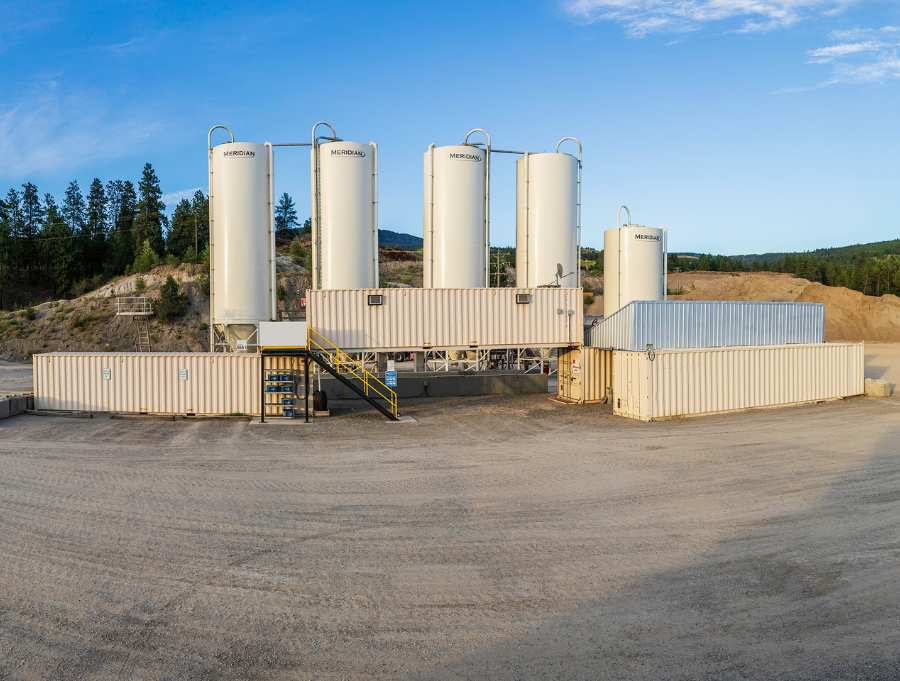
A mechanical room, office space, and break area have been packed into one neatly stacked structure in this unique industrial application. The addition of a stairwell and landing make for an easy flow and pathway for accessing and communicating with colleagues, and enough room underneath for a car or buggy to drive through. The added bonus with this stacked shipping container configuration is a shaded area underneath to retreat to on hot summer work days outside!
Samples On The Bottom, Business On Top
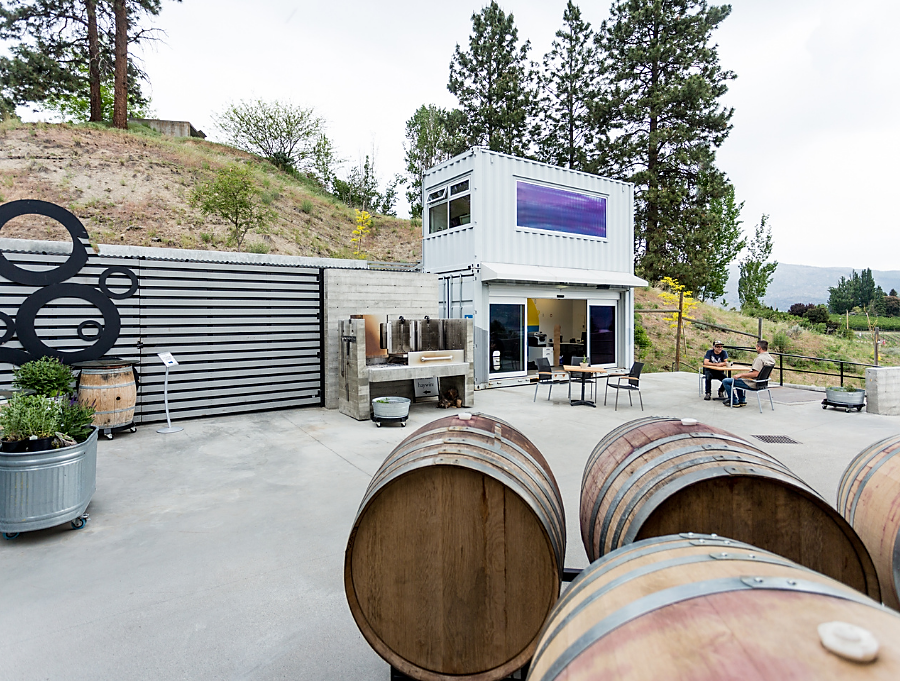
It’s not every day you head out for a tasting tour and end up sipping inside of a stacked shipping container winery. This industrial chic application can be seen at the Okanagan Crush Pad in Summerland, BC where the tasting happens on the ground level, and the administration happens above. The ground-level tasting area comes complete with an open concept and beautiful, sliding glass patio doors that open up to a lounge area. The office space upstairs was modified to accommodate windows at both ends, and a large landscape-sized window on the front, bringing in loads of natural light and vineyard views that are to-die-for.
Maximizing Space With Stories & Stairs
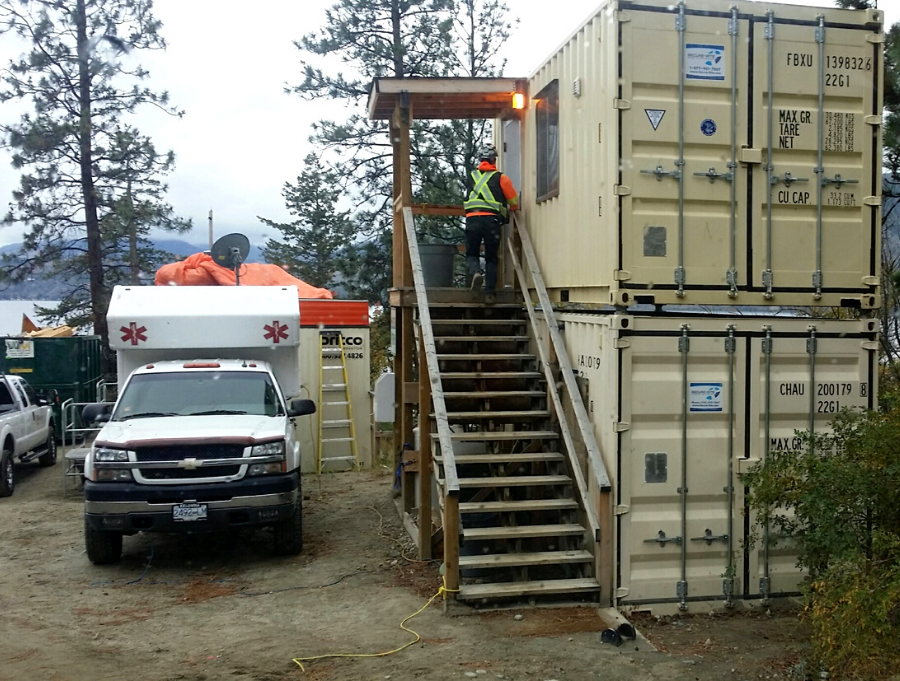
Depending on the size and format of your work site or plot of land, you may need to build “up”. Adding stories and stairs to your shipping container configuration is a smart way to minimize the footprint on the space you have to work within. Thanks to their modular structure, shipping containers allow for easy stair installation and adjustments to fit your unique specifications. For added safety, there are several stair variations that are filled with an embossed anti-skid metal sheet and the option to add industrial safety barriers. Building upwards with shipping containers and stairs allows for the distinction of function in a work area, an enclosed and private space away from the inevitable noise on a work site, while also remaining accessible to colleagues.
Keeping Work & Pedestrian Safety Contained
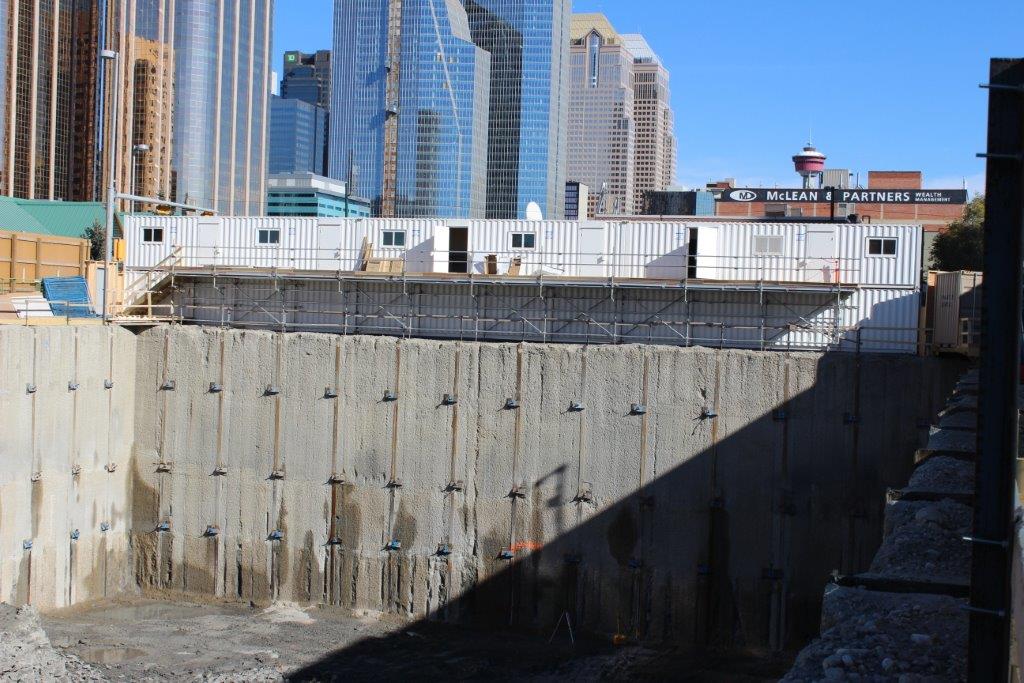
In large cities, building sites often extend right up to the sidewalk, and the builder rarely has any room to place their site offices. Every urban construction project needs a temporary vessel to protect passersby walking through or around the work zone, so a few 40' double door shipping containers are just the thing for the job. A covered pedestrian walkway is always required should a tool or building material fall off the towering structure, it won’t kill or injure a passerby. Since space is limited at these sites and the only way to have more of it is to stack upwards, builders can also acquire permission to put their 40’ container office right on top of the container tunnel. The stacked site office is secure, as the entrance points are facing away from the sidewalk and can only be accessed through the work site side.
Building Capacity For Housing

Photo Credit: Project Keetwonen Amsterdam
Affordable housing, temporary housing, student housing, micro suites…creating more places for people to call home is a regular topic of interest for government entities, and stacked shipping containers are a fitting consideration in this conversation. This particular complex is located in Amsterdam, and it consists of 1,000 student apartments that are stacked five containers high. A more local example of a container housing project is in progress in Victoria, BC, where a local developer and the Greater Victoria Coalition to End Homelessness joined forces to raise $500,000 and convert thirty shipping containers into a temporary “tiny homes” village (read the article). Visionaries like these two parties boast about the benefits of building with shipping containers, including the fact that they are waterproof, fireproof, and can be modified to incorporate windows, doors, and more. Each unit is approximately 100 sq. ft. and is fully heated, ventilated and insulated for optimal livability. These units include a bed, side table, desk with chair, small fridge, and an armoire, and are move-in ready and turn-key for the residents. Shared washroom and shower facilities are located within the enclosed community, along with storage, flex space and on-site office space for the 24/7 operations staff. While shipping container living is a concept that many still grapple with, it is an innovative solution to a housing problem.
Making A Statement

Photo Credit: North West Walls Street Art Project
Shipping containers are blank canvases, both aesthetically and practically speaking. Containers are the neutral building block, and the possibilities for use and appearance are all yours. Stack some shipping containers and hire a local artist or print shop, and you’ve got yourself a billboard or an art installation. Containers can be customized with branding or striking visuals by using decals, vinyl wraps, or paint (take a look at some decaled containers that were used for a pedestrian throughfare in Kelowna). Alternatively, combining stacked 40’ containers with a projection screen makes for a great drive-in theatre or event space (take a peek at the container drive-in theatre we created with the Alberta Cancer Foundation at the Calgary Stampede Grounds). The possibilities are truly endless with a container as your canvas.
However industrial or creative the application, stacked shipping containers are worth their weight in gold in a world of limited space. Shipping containers are durable, secure, transportable, and because of this, they satisfy both permanent and temporary life cycles. If this stack of examples has piqued your interest and curiosity for a modular project of your own, we would love to talk to you about modifying and building with shipping containers!

